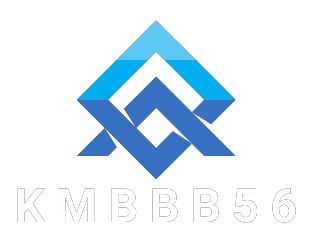Traveling to Barcelona and arriving at El Prat Airport can be an exciting beginning to your adventure in the Catalonian capital. One of the most common and convenient ways to get into the city is by taxi. Whether you’re arriving for business, leisure, or a family vacation, here’s everything you need to know about taking a taxi from Barcelona Airport.

1. Taxi Availability at Barcelona Airport
Barcelona El Prat Airport (BCN) is located approximately 13 km from the city center, and it is very well connected to the city via taxis taxi barcelona aeropuerto. There are two main terminals at the airport: Terminal 1 (T1) and Terminal 2 (T2). Taxis are available 24/7 from both terminals, so no matter when your flight lands, you’ll have access to a taxi.
- Terminal 1 (T1): Taxis are located just outside the arrivals area, on the ground level.
- Terminal 2 (T2): Taxis are available outside the arrivals area as well, with a designated taxi rank.
Both terminals have easy-to-follow signage directing passengers to the taxi ranks, so you won’t have to search long before finding one.
2. Taxi Fares from Barcelona Airport
Taxi fares from Barcelona Airport to the city center are regulated by the local government, ensuring that you won’t be overcharged. The standard fare from the airport to the city center is typically around €30-€40 depending on your destination and traffic conditions.
However, there are a few important things to consider when calculating your fare:
- Standard fare: A flat rate applies to rides from the airport to most central locations in Barcelona.
- Additional charges: If you’re traveling to certain districts (like Barcelona’s port area or some areas outside the city), additional fees may apply. For example, trips to the cruise port may cost slightly more.
- Luggage: If you’re carrying larger luggage, an additional small fee may be added to the fare (usually around €1–€2 per suitcase).
- Late-night surcharge: If you’re traveling between 8 pm and 8 am, or on holidays, an extra surcharge may apply, usually around €3–€4.
- Traffic and route: Sometimes, unexpected traffic or detours may result in a slightly higher fare.
It’s always a good idea to ask the driver for an estimate before starting the journey, though the meter will ultimately determine the price.
3. How to Choose the Right Taxi
Barcelona has a fleet of official taxis that are easily recognizable. The taxis are typically black and yellow with a taxi sign on the roof and a taxi license number displayed on the side door. These licensed taxis are safe, clean, and reliable.
To avoid scams, it’s important to only use official taxis. Unofficial taxis may appear outside the airport, but they are illegal, and the service could be unsafe or overpriced.
4. Taxi Ride Experience
Once you hop into an official taxi, you can expect a comfortable and efficient ride into the city. The drivers are typically friendly and knowledgeable about the area, so feel free to ask them any questions about Barcelona, from restaurant recommendations to sightseeing tips. Here’s what to expect during your ride:
- Payment: Most taxis in Barcelona accept cash (in euros) and credit cards. It’s always a good idea to confirm with the driver before starting the ride if you plan to pay by card.
- Taxi Meter: The meter will be activated as soon as you enter the taxi. The fare is calculated based on time and distance.
- Route: If you’re unfamiliar with the city, you can ask the driver for the most direct route. The driver will likely take the quickest route, but if you’re traveling during rush hour, there may be some traffic delays.
5. Things to Keep in Mind
- Language barrier: While many taxi drivers in Barcelona speak basic English, not all of them are fluent. It’s helpful to know a few basic Spanish or Catalan phrases, such as “¿Cuánto cuesta?” (How much does it cost?) or “¿Me puede llevar a…?” (Can you take me to…?).
- Tipping: Tipping is not obligatory, but rounding up your fare or leaving a small tip for excellent service (around 5-10%) is appreciated.
- Cash or card: Most taxis in Barcelona accept both cash and credit card payments. However, it’s a good idea to ask the driver beforehand if they accept card payments, especially if you’re not carrying cash.
- Traffic: Traffic in Barcelona can be heavy, especially during rush hour (from 8 am–9 am and 6 pm–8 pm). Be prepared for potential delays during these hours.
6. Alternative Transport Options
If you’re not keen on taking a taxi or if you’re traveling on a tighter budget, there are alternative options to get to the city center:
- Aerobús: A direct, fast, and affordable airport shuttle service connecting the airport with Plaça de Catalunya in the city center.
- Train: The Renfe train service connects the airport to the city’s central train stations (such as Sants and Passeig de Gràcia), making it an affordable option, especially for those with light luggage.
- Private Transfers: If you prefer a more private and comfortable option, you can book a private transfer service in advance.
Conclusion
Taking a taxi from Barcelona Airport is a straightforward and convenient way to get to your accommodation in the city center. With official taxis available 24/7, competitive pricing, and an easy-to-follow process, it’s a reliable choice for many travelers. Be sure to keep a few things in mind—such as the potential surcharges for luggage or late-night travel—and you’ll be on your way to exploring Barcelona in no time!
